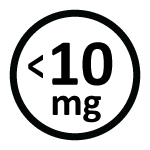–Updated August 2019–
It’s that time where we look ahead into 2019 to establish this year’s cannabis trends.
To jump start the process, we dove deep into last year’s retail sales data. Thanks to our GreenEdge™ platform, we have more than a billion transactions, thousands of products, dozens of categories and much more to examine. But we didn’t stop there. We then distilled key findings – hint, the foundation of consumer trends – from the exhaustive research our Consumer Insights team completed in 2018. And finally, we turned to our Industry Intelligence analysts to make sense of it all.
And now — whew — we have the top 10 trends in cannabis to keep an eye on for 2019.
We don’t pretend to be some soothsaying cannabis-industry Nostradamus, but we stand by these data-driven predictions. Follow along during 2019. Do our predictions play out? We predict the answer: You bet.
1. The Emergence of Social Consumption
We anticipate the emergence of legal cannabis social clubs in some markets in 2019. Yes, plenty of cannabis enthusiasts enjoy their favorite plant while hanging out alone in their homes, or in small groups. But our research shows that a large population of cannabis fans will leap at the chance to imbibe at venues earmarked for legal public consumption. Cannabis-progressive cities like Las Vegas, San Francisco and Denver/Boulder will likely be the first to step up, fostering cannabis experiences the rest of the country will observe with immense interest.
- 71 percent of cannabis consumers say they engage with the plant for social and/or recreational purposes
- About a third specifically consume prior to meeting with others
- 41 percent savor cannabis for date nights, as well as daytime fun
–August 2019 Update–
As predicted, 2019 has proved to be the emerging year for legal cannabis clubs. While the venues continue to navigate their way through many city-related regulatory issues, we expect consumer behavior to follow suit in a preference towards social use.
- In Q1 2019, 71 percent of cannabis consumers in Level 1 U.S. states report using cannabis recreationally/socially
- Approximately a quarter specifically consume prior to meeting with others (Level 1 Consumers)
- About one-third savor cannabis for date day/night, as well as daytime fun
- % Consume marijuana or products containing marijuana at a cannabis social club (T2B; Very frequently)
- 15% California Consumers
- 13% Colorado Consumers
- 12% Nevada Consumers
Supporting Press Coverage:
- Modern Luxury, March 2019
- Robb Report, April 2019
2. The Rise of Beverages
Cheers to sippable cannabis. With the rise of the cannabis beverage market, options abound: cold bottles of kombucha, tea bags, packaged shots of coffee, water-soluble powdered mixes, etc. The cannabis beverage marketplace now is in full ferment. Cannabis beer, too, although pot-infused drinks like ales and Chardonnays are alcohol-free. One especially fresh trend is the rise of CBD (and not THC) beverages, which can be sold outside of dispensaries. There are countless ways to consume cannabis, arguably none easier – or more sociable and intriguing – than simply sipping.
- Thru November 2018, beverages made up 5 percent of the annual US Edibles market, with sales of $30 million
- By 2022, the US Edibles market is projected to reach $3.4 billion, with cannabis beverage sales expanding roughly ten-fold, to $374 million
- As cannabis beverage sales grow, some product categories within the Edibles market will see their percentage of total edibles sales negatively impacted
–August 2019 Update–
The rising trend of cannabis beverages has not slowed–we’ll cheers to that!
- In Q2 2019, beverages made up 6% of the total U.S. edibles market, with sales of $13.4M (+6% vs. YA).
- There is growing brand abundance within cannabis beverages. There were 88 beverage brands on the market in Q2 of this year – 19 more brands than in Q2 2018.
- While the growing cannabis beverage market has not had a negative impact on the overall Ingestibles market just yet, it is a category BDS Analytics will continue to monitor closely. The outcome of the FDA’s deliberations regarding CBD being used as an additive in food & drink will also be a major determining factor to consider
Supporting Press Coverage:
3. The Aging Consumer
We long associated cannabis with youth, which is not a mischaracterization. People in their 20s indeed do stand tall as active marijuana consumers. But so do older generations, including Baby Boomers – an important and growing segment. And those Boomers do not fit neatly in a box.
We might assume they represent the flip-side of younger consumers: Boomers, we know, are more likely to consume cannabis for medical reasons, while younger people are more inclined to use it for fun. But it’s not that simple. Older cannabis consumers do turn to cannabis to help with medical issues, but they also use it to just have a good time.
- 67 percent of Boomers do consume for health and medical reasons
- Boomers are much more likely to identify pains, aches and other medical problems as reasons for consuming
- But nearly 60 percent of Boomers also point toward unwinding and having a good time as reasons for consuming
–August 2019 Update–
The Boomers are still having a booming good time!
- 62% of Boomers in Level 1 States consumed for health or medical purposes in Q1 2019
Supporting Press Coverage:
- MarketWatch, June 2019
- Wall Street Journal, July 2019
- SouthCoastToday, August 2019
4. Rec or Med — It Doesn’t Matter Anymore
Where both markets co-exist, medical dispensaries are generally on the decline, while adult-use shops are booming. So people aren’t using cannabis for medical reasons anymore, right? Nope. The decline of medical dispensaries has nothing to do with the reasons people consume cannabis; instead, it has more to do with business models. As more and varied products become available, along with an increase in education and further de-stigmatization of cannabis consumption, an even larger percentage of consumers will imbibe for both fun and for medicinal purposes. Fewer people, in other words, will self-identify solely as “patients,” and desire medical-only shops. Otherwise known as the rationalization convergence of the “Rec/Med” cannabis consumer.
- 64 percent of people in the United States already believe that marijuana has medical benefits, and in states that already offer adult-use or medical sales, 88 percent endorse cannabis for medical purposes
- Relatively few consumers use cannabis for single purposes; even among people who use cannabis for pain management, 73 percent of them also enjoy marijuana for recreational and social reasons
- Medical markets continue to thrive in the absence of adult-use markets. Arizona’s medical market, for example, expanded from $22 million in January 2017 to $56 million in May of 2018
–August 2019 Update–
The convergence from medical-only “patients” to rec/med cannabis consumers continues to be a growing transition resulting in the dwindling need for medical-only shops. The value of medical-only dispensaries is further diminished in many markets by the common practice of many doctors not actually prescribing marijuana. “Patients” are instead referred to dispensaries and their employees to determine their best treatment options. The lack of insurance companies covering the cost of marijuana treatments further eliminates the need for medical-only options.
- 71 percent of cannabis consumers in Level 1 states consume for rec/social purposes while 56 percent consume for health/medical purposes
- 32 percent consume for BOTH rec and med purposes
- Among cannabis consumers in Level 1 states 55 percent report using for a single purpose, still 45 percent reporting multipurposed consumption (rec/social, health/med, QOL, and/or other)
- Among those who use cannabis for pain management in Level 1 states, 64 percent of them consume for recreational/social purposes and 40 percent consume for both rec and med purposes
Supporting Press Coverage:
- Gothamist, May 2019
5. CBD, CBD, CBD!
The cannabis universe extends beyond dispensary doors, thanks to mounting interest in cannabinoids like CBD, which are compounds found in cannabis as well as its sister plant, hemp. Unlike THC (which also is a cannabinoid), CBD is not psychoactive, and CBD products for sale on grocery store shelves are derived from hemp rather than cannabis.
Products containing CBD are increasingly popular across the country, popping up in new packaged goods categories – or at least being discussed as a possible additive – almost on a weekly basis.
- CBD isn’t psychoactive, but most people who have used it are cannabis consumers. Among consumer types, 39 percent of cannabis Consumers have tried CBD, while just 9 percent of Acceptors and 1 percent of Rejectors have experimented with CBD
- Most cannabis products are inhaled (through smoking or vaping). But with CBD, the leading delivery vehicles are Ingestibles (edibles for example), which represent 53 percent of sales, and Topicals at 24 percent
- Consumer education is paramount. In the United States, 69 percent of people say either there is no difference between the effects of CBD and THC, or they don’t know the answer
—August 2019 Update–
The CBD craze continues to captivate consumers. The recent rise in use and popularity can be primarily attributed to the passage of the 2018 Farm Bill, which, legalized the cultivation of hemp – cannabis with less than 0.3 percent THC by weight. According to the newest service offered by BDS Analytics, CBD Market Monitor, U.S. sales of cannabis- and hemp-derived CBD products are expected to surge to $20 billion by 2024. With recorded sales of only $1.9 billion in 2018, this 49% compound annual growth rate is staggering.
- In the U.S., 56 percent of people say either there is no difference between the effects of CBD and THC, or they don’t know the answer (EDUCATION IS WORKING — COMPARE AGAINST PREVIOUS STAT)
Supporting Press Coverage
- Forbes, May 2019
- Bloomberg, July 2019
6. Brands Further Solidified
The days of bulk bud in plastic vials fully dominating the cannabis marketplace are over. In every other category outside of Flower — Edibles, Concentrates and Topicals — brands far and away lead sales. And brands drive much of the market’s meteoric growth. Brands that are building loyal fan bases and producing quality products – that deliver on promised physio- and psycho-experiences – are excelling.
- In Colorado, branded products make up 96 percent of the Edibles market
- Brands are building upon their gains. During the first quarter of 2015 in Colorado, the leading Edible brand captured 12.5 percent of sales, with competitors close behind. But by the third quarter of 2018, the leading brand captured 23 percent of sales, and competitors drifted further behind
- The battle of the brands is fierce in Colorado among Concentrates companies. During Q3 2015, the top five brands controlled 61 percent of sales. But by Q3 2018, sales among the top five accounted for only 35 percent. Others are coming on strong as brand awareness of “fighter” brands increases
–August 2019 Update–
Branded products continue to hold the lead within dispensary sales. As marketing prowess and consumer recognition continue to strengthen, it is more than likely that this will remain a consistent trend.
- In Colorado, branded products made up 95 percent of the Ingestibles market in Q2 2019 – up two percentage points from Q2 2018.
- In Q2 2019, the leading Ingestibles brand in Colorado captured 22 percent of total sales in the category, with the closest competitor capturing 11 percent of the Ingestibles market.
Supporting Press Coverage:
- Bloomberg, August 2019
7. Convenience is King
Elaborate dab rigs, complete with large glass vessels, nails and blowtorches, are fan favorites for some. But current trends suggest their popularity is capped. The reason? Convenience is winning the day in the cannabis marketplace. The masses crave convenience when buying, as well as when consuming. The triumph of convenience is especially true among people who are new to cannabis altogether.
- “Location is convenient” is a top consideration for where consumers shop. 67 percent of dispensary shoppers identified it as vital
- Half of cannabis consumers say they are “largely” influenced by the convenience of the consumption form when choosing a product, qualifying as a top 5 decision factor
- Delivery matters – as in delivery services – just as it does for all other products. Who today isn’t taking advantage of the new world order of having others shop for what they are buying?
–August 2019 Update–
Elaborate smoking devices and contraptions have spent a fair amount of time in the spotlight, but current trends suggest their popularity has capped; the reason? The allure of convenience is too hard to ignore, both in terms of cannabis shopping and consuming. This is especially true for new consumers who often find the smoking-device favorites of veteran consumers intimidating and overly-complicated.
The importance of convenience in location of shopping is further reflected in many legal markets today, though California stands at the forefront of this issue. The lack of equal distribution in legal dispensary locations has resulted in the ongoing boom within California’s black market. Would-be dispensary shoppers are not willing to make the 20-mile, one hour-plus round trip to a legal dispensary when they can easily meet their cannabis needs within a few blocks of their home—even if it is illicit.
Supporting Press Coverage:
- NPR, August 2019
8. Growth of Consistent, Low-Dose, Dialed in Products
Plenty of people still just wing it when enjoying cannabis. But increasingly more cannabis consumers care deeply about consistent dosing, and being able to carefully control the nature of their experiences.
- 33 percent of Edibles consumers prefer low-dose products, defined as products containing less than 10 mg of THC per serving
- 40 percent of Edibles consumers have chosen high-CBD products, and of these 27 percent prefer products that are low in THC (1 mg) and high in CBD (10 mg)
- Among consumers, 33 percent say manufacturers need to do a better job with crafting consistent doses, and 41 percent say they wish more products were labeled with the desired, manufactured effects, such as relaxation or energy
–August 2019 Update–
While many consumers still appreciate the “wild card” dosage and effect of their products, there is a growing population who prefer to enjoy their cannabis in controlled doses that meet the expectations set by labeling.
- 43 percent of Edibles consumers prefer low-dose products, defined as products containing less than 10 mg of THC per serving. (UPDATED STAT)
- 54 percent of Ingestibles consumers in fully legal states have chosen products based on their CBD content and within this group of people, 58 percent prefer products that have a higher ratio of CBD to THC or no THC at all.
- Among consumers in fully legal states, 39 percent agree manufacturers need to be more consistent in their crafted dosage, and 43 percent have voiced a desire for products labeled with the intended effect, such as relaxation or energy.
Supporting Press Coverage
- Global News, February 2019
9. A Refocus on the Core
Even with the influx of so many new and exciting customers flooding the market, companies – including brands and retailers – that place a reinvigorated focus on their core customers will flourish.
Understanding who your core customers are is key, and that most certainly includes discerning consumers — those cannabis enthusiasts who have experimented with the industry’s manifold products, and who understand at least some basics about cannabis science. While “mainstream consumers” will continue to grow, successful companies still must focus their marketing, merchandizing and/or product development efforts on their core. Collectively, this group often guides trends. What the discerning consumer likes today, the mass market might embrace in six months.
- Discerning consumers are influencers, early adopters and lead indicators
- They spend more for quality, keep up with technology, care that products are locally grown or manufactured, and prefer local, natural, organic, and socially interested brands
- They care about things like processing methods, terpenes, additional cannabinoids, growing methods, and packaging
–August 2019 Update–
No new update to report other than this retail trend has been put to practice by a large percentage of BDS Analytics GreenEdge retail partners.
10. Declining Prices
The prices for most cannabis products keep inching down, for a variety of reasons. One of them? Price remains the No. 1 driver of consumer product choice. No shocker here — the bulk of consumers prefer more affordable products.
Premium products can still triumph, but offering perceived price value is a surer way of establishing a strong, loyal, more frequently purchasing customer base.
- The average price for Oregon Flower has declined from $9.27 a gram in January 2016 to $4.27 in November 2018
- Prices in all broad categories — Flower, Concentrates, Edibles and Topicals — have declined in Colorado, although none of the drops compare to Flower. Concentrates, for example, fell merely 20 percent between January 2016 and November 2018
- The price-dip scenario was reversed in California, however. Edibles prices averaged $14.43 in March of 2017 (before recreational legalization) and rose to $20.93 in November 2018. The proverbial supply & demand pricing dynamic kicked in once more stringent testing laws went into effect in July 2018
–August 2019 Update–
Analytics pulled from our GreenEdge retail sales tracking platform:
- The average price of Flower in Oregon has declined from $9.28 per gram in January 2016 to $3.84 per gram in June 2019.
- In Colorado, average price has declined for both the Flower and Concentrates categories – 44 percent and 26 percent, respectively – between January 2016 and June 2019.
- CALIFORNIA IS DIFFERENT: The pricing situation has manifested differently in California. Between March 2017 and June 2019, the average price of Flower has dropped by only 3 percent. On the other hand, the average price of Ingestibles and concentrates have increased by 33 percent and 23 percent, respectively. The supply-and-demand pricing dynamic shifted once more stringent testing laws went into effect in July 2018.
Our 2019 projected trends were influenced and inspired by the collective brain trust of BDS Analytics:
Research completed in 2017/2018 by our Consumer Insights team
Retail sales data powered by our GreenEdge™ Platform
Comprehensive analyses led by our Industry Intelligence team with forecasts produced in collaboration with partner Arcview Market Research











